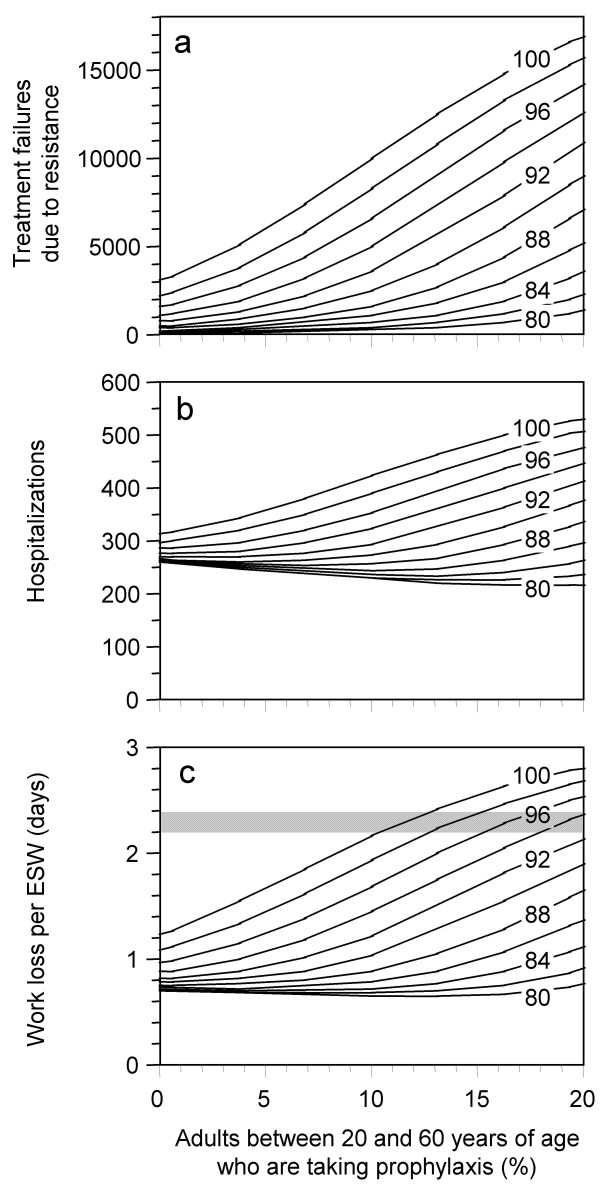Figure 3.
Influence of antiviral prophylaxis. Influence of antiviral prophylaxis and of the fitness of the resistant strain on a pandemic wave in a population of 100,000 individuals into which a single nonresistant infection is introduced on day 0 (development of resistance and other details see Fig. 2 and text). The horizontal axis shows what percentage of the population between 20 and 60 years of age receives prophylaxis; the numbers 80 ... 100 in the graphs indicate the fitness of the resistant strain. Simulations with lower fitness values lead to curves which are nearly identical to the 80% fitness curves. The results are given as (a) total number of treatment failures due to drug resistance; (b) total number of hospitalizations; (c) expected duration of work loss per ESW (essential service worker), i.e. per person who receives prophylaxis. Even without any prophylaxis in the population, the average work loss per person is slightly modified by the fitness of circulating resistant virus (because of treatment in the population). The grey horizontal bar shows the range of work loss per person which must be expected without prophylaxis (whereby the lower values in the grey area refer to low fitness and the high ones to high fitness values).

